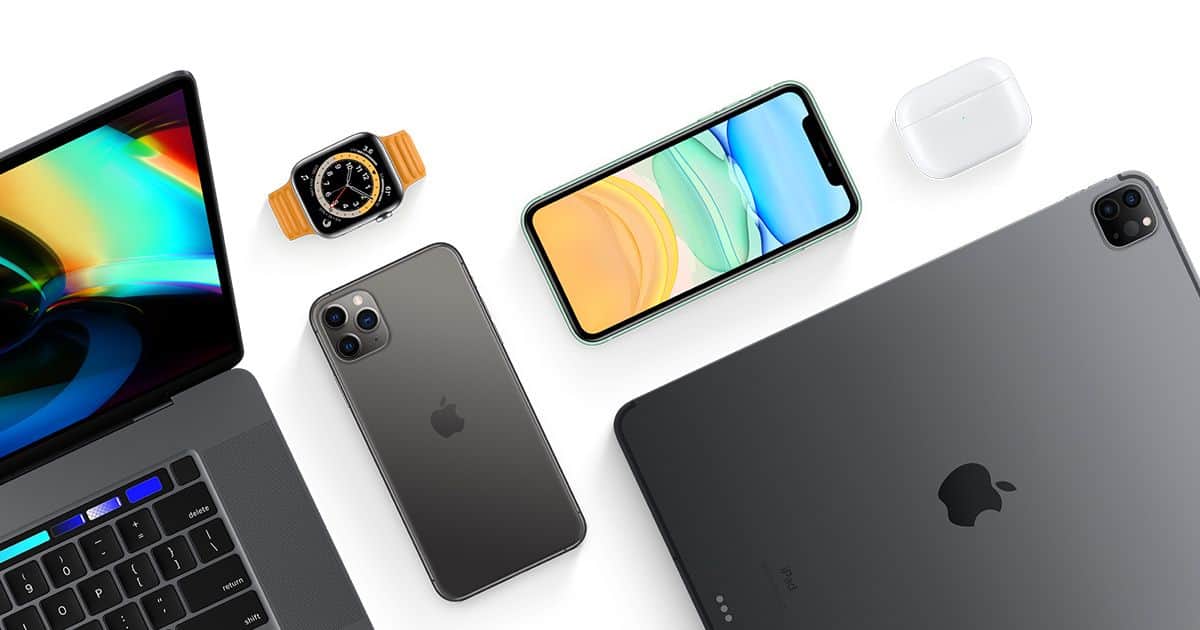Discover Upgraded, a subscription service that lets you get the latest MacBook without paying thousands upfront.
Apple Gear Deals: Power Bank 87% Off, $20 USB-C Dock, and More
Right from power banks to Mac accessories, check out these Apple gear deals to score some tempting discounts on your favorites.
Apple Ordered to Pay $700M+ Fine in UK Patent Case
Apple has been ordered to pay over $700 million in a major UK patent ruling after a London appeals court sided with Texas-based Optis over 4G licensing fees.
Zuckerberg Says Apple Rules Killed Facebook’s App Platform
Mark Zuckerberg blames Apple’s App Store rules for killing Facebook’s app platform and shutting down key revenue streams like FarmVille.
When Is iOS 18.5 Coming Out?
Curious about when iOS 18.5 is coming out? Get the latest updates and insights on the upcoming iPhone software release.
Apple’s Future iPhones Could Fall Apart Under the Weight of Tariffs and Delays
We know the tariffs could spike future iPhone prices to $2,300, but what about other Apple products? They might not even see the light of day!
Apple Sanctioned, Epic Games’ Fortnite Comes to iOS Store
A U.S. judge has sanctioned Apple for defying a court order on App Store rules, clearing the way for Epic Games to relaunch Fortnite on iOS after nearly five years.
Apple iPhone Supply Grew 13% in Early 2025
Apple defied industry trends in Q1 2025, growing iPhone shipments by 13% and expanding its market share, even as global smartphone sales stalled.
Apple CEO Excited as TSMC Expands With New US Chip Plant
Apple CEO Tim Cook backs TSMC’s latest move to expand chip production in the U.S. as construction begins on its third Arizona plant—part of what’s now the largest foreign investment in U.S. history.
Formula 1’s Hamilton Spotted With CEO Tim Cook at Apple Park
Lewis Hamilton’s visit to Apple Park with Tim Cook has reignited buzz around Apple’s upcoming F1 film and his long-awaited documentary. Here’s what we know.
Google CEO Hopes Gemini Will Join Apple Intelligence in iOS 19
Google CEO Sundar Pichai wants Gemini to power AI features on iPhones. With iOS 19 on the horizon, a deal with Apple could be closer than ever.
Get a 24-Inch M3 iMac (8/512GB) for just $1099
To welcome the signs of spring a certain retailer has a great price on a 24-inch M3 iMac that’s sure to keep your days colorful.
Save $60 on this Smart Keyboard for iPad, iPad Air, and iPad Pro (Select Models)
Save big on the Apple Smart Keyboard for iPad and give your old iPad an upgrade. Enjoy an easy-breezy typing experience.
Get a Renewed 16-Inch M1 MacBook Pro (16GB/512GB) for Just $972
Planning to buy a powerful MacBook? Amazon is offering the renewed 16-inch M1 MacBook Pro with 16GB of RAM and 512GB of storage at $972.
Wednesday App Finder: An AI Image Detector on Your iPhone
Want to check whether that photo your uncle Fred sent is real or created by AI? This iOS app turns your iPhone into an AI image detector!
Is There a Task Manager on macOS?
Apple’s macOS has its own version of Task Manager called Activity Monitor that’s powerful, easy to use, and already built into your Mac.
Best macOS Window Manager: Tested Apps for Tiling and More
For a long time, Apple swore nobody needed a window manager in macOS, but many developers disagree — and here are the best options
Apple to Boost iPhone Production in India With Tata and Foxconn
Apple is shifting more iPhone production to India through new Tata and Foxconn plants, aiming to cut reliance on China and meet U.S. demand amid rising trade tensions.
Apple’s Snapshot Highlights Popular Music Artists, Actors, and Athletes
Apple unveils Snapshot, a new hub that lets you quickly explore your favorite artists, actors, and athletes across Apple Music, Apple TV+, and Apple Podcasts.
3 Best macOS Screen Recorders with Audio
Want to record internal system audio on your Mac? These best macOS screen recorders with audio can help you out for free.
Trump Official Confirms US-Made iPhones Are Coming
Apple plans to make iPhones in the US but is waiting for robotic arms to start production, says a Trump official.
Score $80 Off AirPods Pro 2 at Best Buy and Enjoy Free Apple Music
Better act fast—Best Buy is offering $80 off the AirPods Pro 2 and three months of Apple Music for free. Check inside to learn more.
Meta AI App Debuts on iPhone and iPad
Meta has launched a new dedicated AI app for iPhone and iPad users, powered by its Llama 4 model.
Will iPhones Made in Other Countries Differ From Current Ones?
With all the ongoing debate about Trump’s tariffs, it’s ok to be confused about how iPhones manufactured in each country differ from others























